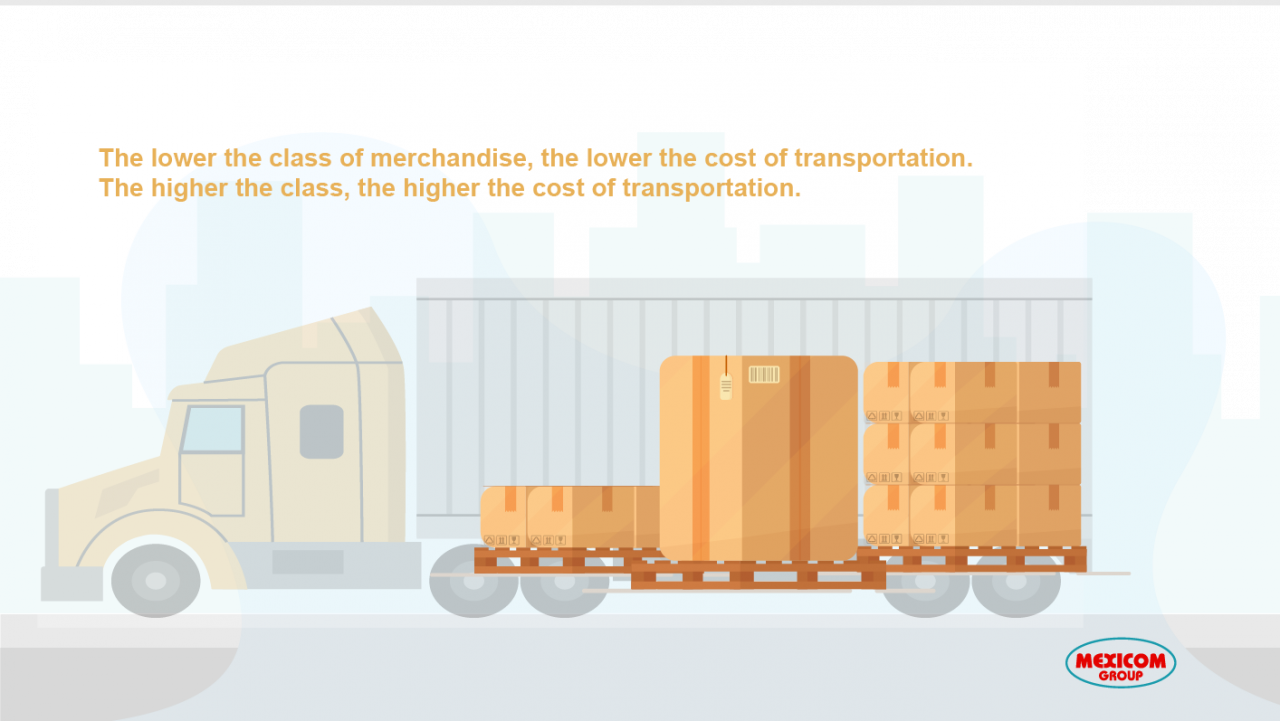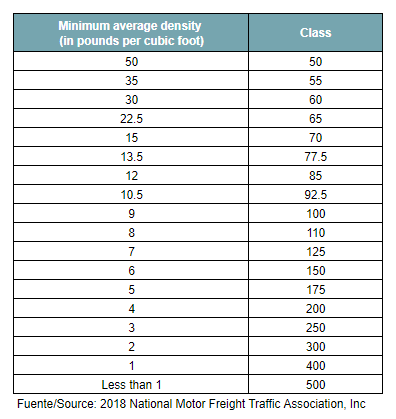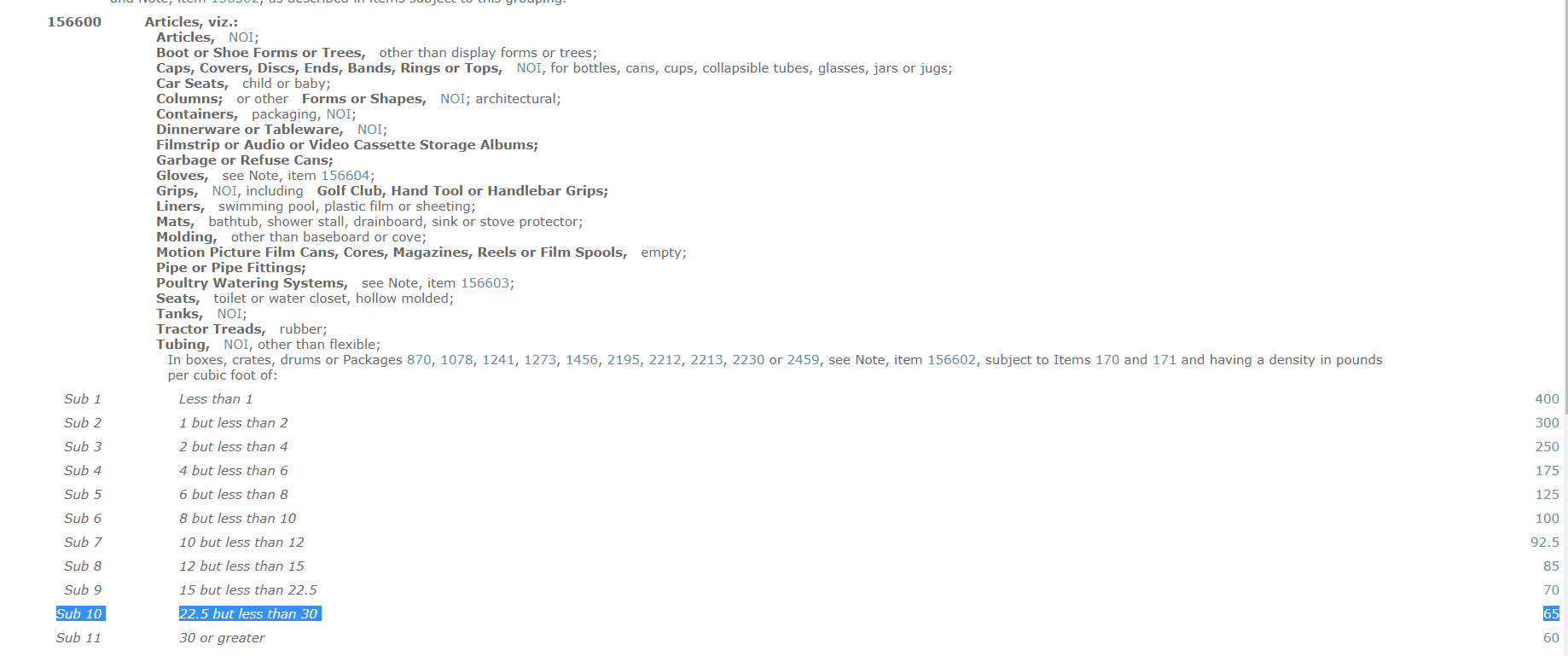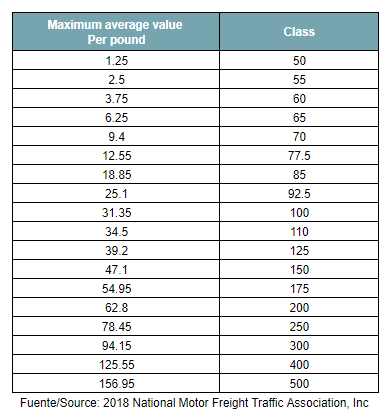Understanding the freight classification when shipping LTL from Canada and the USA
What is the LTL class?
The class is the number assigned to the LTL merchandise in the United States and Canada, according to its classification in the National Motor Freight Classification (NMFC). This classification depends on the level of “transportability” of the merchandise, which is determined by characteristics of the merchandise such as its density, handling, stowability, and liability.
How many freight classes are there?
There are 18 different classes, ranging from the number 50 that is the lowest, to class 500, which is the highest. The lower the class of merchandise, the lower the cost of transportation. In turn, the higher the class, the higher the cost of transportation.
The NMFC System allows consumers to have a standardized method to provide a uniform pricing structure for cargo transport.

How the freight class is determined?
Density
When the handling characteristics, stowability and liability are not significant or unusual, the most important value to take into account for the classification of the merchandise is the density. The National Motor Freight Traffic Association has density guidelines that are used to assign the class when the average density of the merchandise is representative or reflects the range of densities displayed.
The guidelines on density for the classification of products according to the National Motor Freight Traffic Association, are the following:

Example of the assignment of the class based on to the density:
Let’s take the example of a 48x48x48 pallet with 1250 lbs of plastic pins.
1- First, the density is calculated.
Density refers to the relationship between the weight and volume of an object. Objects with high density appear to be very heavy for their size and those with lower density seem very light for their size.
The calculation of the density of an object is obtained by dividing the mass among its volume, thus, the density of the pallet of 48x48x48 with 1250 lbs, is 23.4375

2. Based on the type of item and its density, the class is determined.
In our example, since the plastic pins have a density greater than 22.5 but less than 30, the class is 65.

Handling
There is merchandise that is especially fragile or that requires a special type of handling due to its size, weight, level of danger, among other factors. So it requires special care and attention.
The difficulty or ease of handling of the merchandise should be taken into account when assigning the freight class. If the merchandise has unusual or significant handling characteristics, handling could be a factor to consider when assigning a class.
Stowability
Generally speaking, palletized loads can be accommodated without difficulty in the truck to be transported. However, there are some exceptions of cargo that has special considerations to take into account for its placement in the truck. Examples of loads with special requirements regarding their placement in the truck are hazardous materials that require special handling, as well as very heavy or oversized loads or loads with protuberances.
As in handling, if the merchandise has unusual or significant requirements for its placement in the truck, this could be a factor to consider when assigning a class.
Liability
This category includes aspects such as susceptibility to theft, liability for damages, the propensity to damage other loads that travel in the same truck, perishability, dangerousness, and value per pound.
As in the case of the other characteristics of the merchandise, if the liability is unusual or significant, it will be a factor to be taken into account when assigning a class.
The value is not a characteristic of transportation by itself ( as density is). The value is a subcategory of the liability. That is why the guidelines corresponding to the value should be analyzed in conjunction with the other subcategories of the liability.
The guidelines on value, according to the National Motor Freight Traffic Association, are the following:

http://www.nmfta.org/pages/nmfc










Very useful information